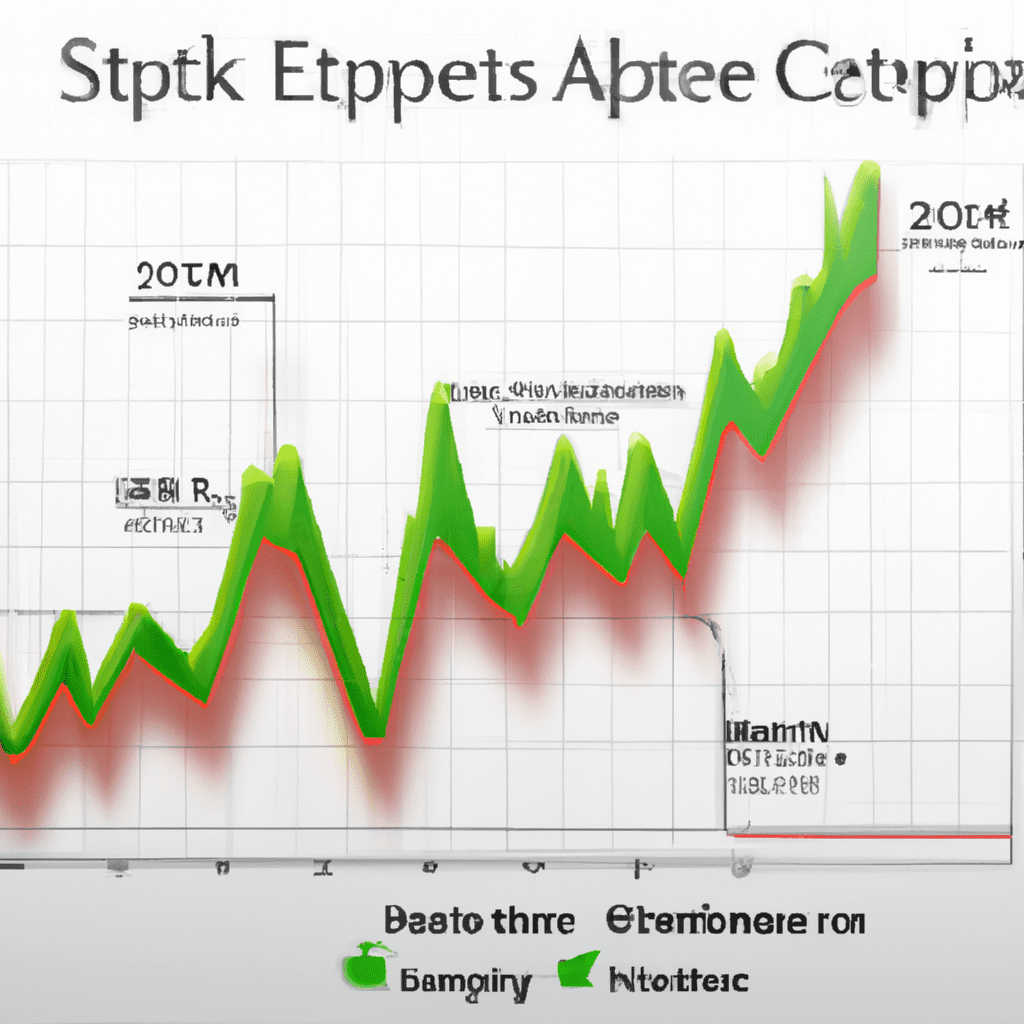JPMorgan’s Opinion on Bitcoin’s Potential in Investors’ Portfolios
March 12, 2024 | by stockcoin.net

JPMorgan, a renowned financial institution, recently provided their opinion on the potential of Bitcoin within investors’ portfolios. According to JPMorgan, it is deemed unrealistic to anticipate that Bitcoin will parallel gold as an asset class. This statement has grabbed attention within the market as Bitcoin continues to gain popularity and recognition, prompting investors to question its significance in their investment strategies. JPMorgan’s perspective sheds light on the ongoing debate surrounding Bitcoin’s viability as a valuable addition to diverse investment portfolios.
JPMorgan’s analysis of Bitcoin’s potential in investors’ portfolios
JPMorgan, one of the leading financial institutions in the world, has been closely analyzing the role of Bitcoin in investors’ portfolios. The controversial cryptocurrency has attracted significant attention and curiosity from both institutional and retail investors, prompting JPMorgan to delve into its advantages and disadvantages as an investment asset. Through meticulous research and careful analysis, JPMorgan aims to provide insights into Bitcoin’s potential and shed light on its suitability for inclusion in investment portfolios.
Advantages and disadvantages of including Bitcoin in investment portfolios
Potential for high returns
One of the primary advantages of including Bitcoin in an investment portfolio is its potential for high returns. The cryptocurrency has experienced unprecedented price appreciation over the years, making early adopters and long-term holders considerable profits. JPMorgan’s analysis acknowledges the substantial returns that some Bitcoin investors have realized, which can significantly enhance the overall performance of a diversified portfolio.
Diversification benefits
Bitcoin also offers diversification benefits to investment portfolios. As a unique asset class, its correlation with traditional investment assets such as stocks and bonds is relatively low. This low correlation means that adding Bitcoin to a portfolio can potentially reduce the overall risk and volatility. By diversifying across multiple asset classes, investors can better protect their portfolios against market downturns and increase their potential for long-term returns.
Liquidity concerns
On the flip side, one disadvantage of including Bitcoin in an investment portfolio is the liquidity concerns it poses. Unlike traditional financial markets, the cryptocurrency market can be highly volatile and illiquid, especially during periods of extreme market turbulence. This liquidity risk could impact an investor’s ability to buy or sell Bitcoin at desired price levels, potentially leading to significant price slippage and increased transaction costs.
Volatility and risk
Bitcoin’s well-known volatility is another factor that investors need to consider. The cryptocurrency market is susceptible to rapid price fluctuations, which can cause significant gains or losses within short periods. While this volatility presents opportunities for profit-making, it also exposes investors to heightened risk. JPMorgan’s analysis acknowledges that the volatility of Bitcoin should be carefully considered before including it in an investment portfolio, especially for risk-averse investors who prioritize capital preservation.
Regulatory and security risks
Regulatory and security risks are also important factors to consider when contemplating adding Bitcoin to an investment portfolio. The regulatory landscape surrounding cryptocurrencies remains uncertain and ever-evolving. Governments and regulatory authorities worldwide have varying stances on Bitcoin and its legal status. This regulatory uncertainty can result in sudden changes in rules and regulations, potentially impacting the value and viability of Bitcoin as an investment asset. Additionally, the security of holding and transacting Bitcoin is a paramount concern, as the cryptocurrency ecosystem has faced several high-profile hacks and security breaches in the past.
JPMorgan’s perspective on Bitcoin as a store of value
Bitcoin’s limited supply and scarcity
JPMorgan’s analysis recognizes Bitcoin’s limited supply as one of its key attributes that contribute to its potential as a store of value. With a maximum supply capped at 21 million coins, Bitcoin exhibits scarcity similar to gold, an asset traditionally valued for its limited availability. The scarcity factor can potentially drive up Bitcoin’s value over time, making it an attractive store of value for long-term investors.
Comparison with traditional stores of value
In comparison to traditional stores of value, such as gold and other precious metals, Bitcoin is a digital asset that exists solely in the digital realm. This distinction raises questions about its intrinsic value and the broader market acceptance of Bitcoin as a legitimate store of value. While many individuals and institutional investors are beginning to recognize Bitcoin’s potential, there remains some skepticism and uncertainty regarding its long-term viability as a store of value.
Institutional acceptance and integration
JPMorgan’s analysis highlights the growing acceptance and integration of Bitcoin into the institutional investment landscape. Major financial institutions, including JPMorgan themselves, have shown increasing interest and involvement in the cryptocurrency market. The establishment of regulated cryptocurrency exchanges and the introduction of Bitcoin-focused investment products, such as futures contracts and exchange-traded funds (ETFs), indicate a growing interest from institutional investors. This institutional acceptance and integration serve as an important factor in considering Bitcoin’s role as a store of value within investors’ portfolios.
Bitcoin’s correlation with traditional assets
Historical correlation analysis
JPMorgan’s research includes a historical correlation analysis between Bitcoin and traditional assets, such as stocks and bonds. This analysis explores the degree of correlation between Bitcoin and these assets, which provides insights into its diversification potential. Correlation measures how closely two assets move in relation to each other and can range from -1 (perfect negative correlation) to +1 (perfect positive correlation). A low or negative correlation between Bitcoin and traditional assets suggests that the inclusion of Bitcoin in a portfolio can potentially reduce overall portfolio risk.
Bitcoin’s relationship with stocks and bonds
JPMorgan’s findings indicate that Bitcoin has demonstrated a relatively low correlation with stocks and bonds, especially during periods of market stress. This low correlation implies that Bitcoin’s performance is influenced by unique factors that are unrelated to the broader stock and bond markets. As such, adding Bitcoin to a portfolio can potentially provide significant diversification benefits and reduce the overall risk exposure to traditional assets.
Impact of macroeconomic factors on correlation
JPMorgan’s analysis recognizes that the correlation between Bitcoin and traditional assets can be influenced by macroeconomic factors. During periods of economic uncertainty or financial market instability, correlations tend to increase as investors flock to safe-haven assets. Conversely, during periods of economic growth and market confidence, correlations may decrease as risk appetite increases. Understanding and monitoring these macroeconomic factors is crucial for assessing Bitcoin’s correlation with traditional assets and its potential impact on a diversified portfolio.
JPMorgan’s verdict on Bitcoin’s ability to match gold
Bitcoin’s potential as a digital gold
JPMorgan acknowledges Bitcoin’s potential to act as a digital gold within investors’ portfolios. Digital gold refers to an asset that shares similar attributes with physical gold, such as scarcity and store of value properties. Bitcoin’s limited supply and decentralized nature provide it with qualities that parallel those of traditional gold, positioning it as a potential alternative for investors seeking a digital store of value.
Factors hindering Bitcoin’s ability to match gold
However, JPMorgan’s analysis also identifies certain factors that hinder Bitcoin’s ability to match gold within investors’ portfolios. The regulatory uncertainties surrounding Bitcoin, its relative newness compared to gold, and the volatility of the cryptocurrency market are all challenges that Bitcoin needs to overcome in order to match the long-standing reputation and trust held by physical gold.
Market factors influencing gold’s dominance
JPMorgan recognizes that market factors, such as investor sentiment and economic conditions, play a crucial role in determining gold’s dominance as a store of value. Despite Bitcoin’s potential, gold has entrenched itself as a trusted and globally recognized store of wealth over centuries. Breaking gold’s dominance would require significant market shifts and sustained changes in investor perceptions and preferences.
Factors affecting Bitcoin’s role in portfolios
Investor risk appetite
One of the factors that significantly affects Bitcoin’s role in portfolios is investor risk appetite. Investors with a higher risk tolerance may be more inclined to allocate a larger portion of their portfolios to Bitcoin, attracted by the potential high returns but also acknowledging the accompanying volatility. Conversely, risk-averse investors may opt for only a minimal Bitcoin allocation, or even avoid it altogether, due to concerns about its volatility and regulatory risks.
Regulatory developments
Regulatory developments have a profound impact on Bitcoin’s role in investment portfolios. Changes in regulatory frameworks, such as widespread adoption or bans on cryptocurrencies, can significantly impact the value and viability of Bitcoin as an investment asset. Investors must closely monitor and assess regulatory developments to effectively manage the risks associated with Bitcoin and its inclusion in their portfolios.
Technological advancements
Technological advancements in the cryptocurrency space also influence Bitcoin’s role in portfolios. Improvements in scalability, security, and user-friendliness of Bitcoin and its underlying blockchain technology can strengthen its position as a viable investment asset. Additionally, advancements in related technologies, such as decentralized finance (DeFi) platforms and cryptocurrency custody solutions, can further enhance Bitcoin’s utility and adoption within investment portfolios.
Market infrastructure for Bitcoin
The development of robust and regulated market infrastructure for Bitcoin is essential for its inclusion in investment portfolios. Factors such as the establishment of regulated cryptocurrency exchanges, the introduction of sophisticated trading and custody solutions, and the development of financial instruments linked to Bitcoin, such as futures contracts and ETFs, contribute to the overall market infrastructure. A well-functioning and secure market infrastructure provides investors with the necessary tools and confidence to effectively include Bitcoin in their portfolios.
Market liquidity and depth
Lastly, market liquidity and depth are critical factors that impact Bitcoin’s role in portfolios. Liquidity refers to the ease of buying or selling an asset without significantly impacting its price. A liquid market ensures that investors can execute trades quickly and efficiently. Depth, on the other hand, signifies the volume of buy and sell orders available in the market. Deep markets provide investors with a wide range of trading options and minimize the risk of price manipulation. Improvements in Bitcoin liquidity and market depth contribute to its suitability as an investment asset and enhance its overall value proposition.
In conclusion, JPMorgan’s comprehensive analysis of Bitcoin’s potential in investors’ portfolios reveals both advantages and disadvantages of including the cryptocurrency in investment strategies. The potential for high returns, diversification benefits, and its limited supply position Bitcoin as an attractive investment asset. However, liquidity concerns, volatility, regulatory, and security risks must also be carefully weighed. JPMorgan’s analysis also explores Bitcoin’s role as a store of value and assesses its correlation with traditional assets. While Bitcoin shows potential to match gold, there are market factors and challenges hindering its full integration. Finally, various factors such as investor risk appetite, regulatory developments, technological advancements, market infrastructure, and liquidity influence Bitcoin’s role in investment portfolios. By closely considering these factors, investors can make well-informed decisions regarding the inclusion of Bitcoin in their portfolios, taking advantage of its potential while managing associated risks.

RELATED POSTS
View all





